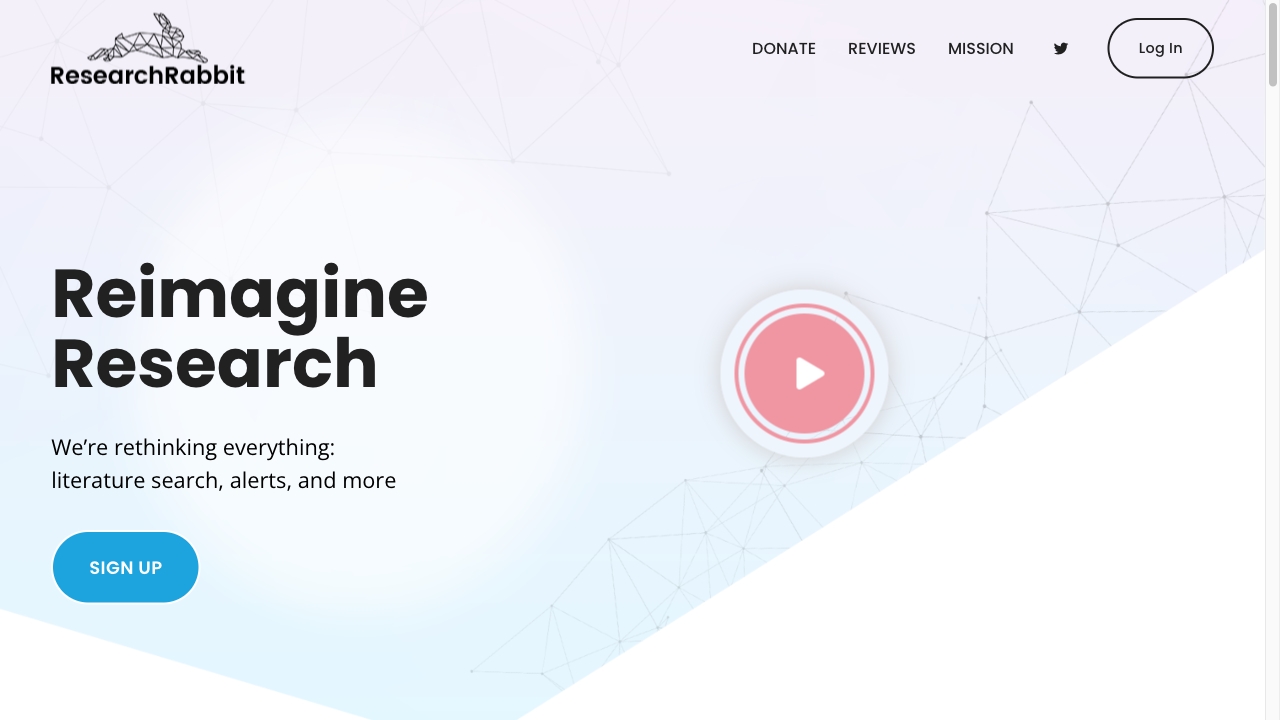- Home
- AI Knowledge Management
- Research Rabbit

Research Rabbit
Open Website-
Tool Introduction:AI toolkit for e‑commerce visuals: design, remove BG, enhance.
-
Inclusion Date:Oct 21, 2025
-
Social Media & Email:
Tool Information
What is Research Rabbit AI
Research Rabbit AI (also known as ResearchRabbit) is an AI-powered platform for research discovery, visualization, and organization. It helps scholars and R&D teams explore papers, map citations, and track trends through interactive networks. The system learns your interests to deliver personalized paper recommendations and timely alerts, reducing noise while keeping you current. With collaborative collections, topic filters, and visual bibliographic maps, it turns scattered literature into coherent research streams you can explore, compare, tag, and share in a single workspace.
Research Rabbit AI Main Features
- Interactive citation maps: Visualize citation, co-citation, and co-author networks to reveal influential papers and emerging clusters.
- Personalized recommendations: AI-driven suggestions for relevant papers, authors, and venues based on your reading and collections.
- Smart alerts: Stay updated with notifications for new publications and evolving topics without drowning in irrelevant results.
- Trend tracking: See how fields evolve over time and spot gaps, surges, and adjacent areas worth exploring.
- Collaborative collections: Build shared reading lists, organize references, and align teams with notes and tags.
- Contextual exploration: Jump from a seed paper to related works, similar authors, and bibliographic neighbors in a few clicks.
- Noise reduction: Filters and relevance ranking help surface high-signal literature for faster literature reviews.
- Research organization: Curate topics, annotate items, and maintain a structured, searchable research workspace.
Who Should Use Research Rabbit AI
Research Rabbit AI is ideal for graduate students, academics, librarians, and research groups running literature reviews or systematic reviews. It suits R&D teams in biotech, software, and engineering who monitor scientific trends, as well as policy analysts, consultants, and product teams conducting evidence scans and competitive landscaping across fast-moving domains.
How to Use Research Rabbit AI
- Create an account and set up your first collection focused on a topic, problem, or project.
- Add a seed paper or author to start; search by title, author, or identifier to populate your workspace.
- Open the visualization to inspect citation and co-author networks; identify hubs, clusters, and outliers.
- Expand nodes to discover related papers; refine with filters and add the best items to your collection.
- Enable alerts to receive updates on new relevant publications and author activity.
- Organize with tags and notes; group items by subtopic, methodology, or priority.
- Share collections with collaborators to coordinate reading and discuss findings.
- Revisit maps periodically to track shifts, emerging venues, and newly influential work.
Research Rabbit AI Industry Use Cases
University labs use Research Rabbit AI to accelerate literature reviews and map adjacent fields before grant applications. Pharmaceutical R&D teams monitor mechanistic pathways and trial literature to identify promising targets. Policy think tanks scan evidence across domains to inform briefs with up-to-date sources. Product and AI teams track academic advances, benchmark against competitors, and surface niche subfields for strategic research bets.
Research Rabbit AI Pricing
Pricing and plan details may change over time. Visit the official website for current plans and any available free or trial options.
Research Rabbit AI Pros and Cons
Pros:
- Clear visual maps of citations and authors make complex fields easier to navigate.
- Personalized recommendations and alerts reduce search time and information overload.
- Collaborative collections streamline team-based literature reviews.
- Effective for discovering adjacent topics and hidden, high-impact papers.
- Helps structure research with tags, notes, and organized reading lists.
Cons:
- Coverage and freshness depend on indexed sources and metadata quality.
- Algorithmic relevance can miss niche papers without good signals.
- Network visualizations may have a learning curve for new users.
- Not a full reference manager; you may still need citation management tools.
- Recommendations reflect past behavior and can reinforce topic bias if unchecked.
Research Rabbit AI FAQs
-
Does Research Rabbit AI replace a reference manager?
No. It excels at discovery, visualization, and organization, but you may still use a dedicated citation manager for formatting and bibliography workflows.
-
How does it choose recommended papers?
Recommendations are driven by citation relationships, author networks, and your interaction signals to surface high-relevance items with minimal noise.
-
Can I collaborate with others?
Yes. You can share collections, align reading lists, and discuss findings to coordinate team research efforts.
-
Is it useful for systematic reviews?
It can accelerate scoping, gap analysis, and candidate paper discovery, but formal protocols and screening tools are still recommended for systematic workflows.
-
Will it keep me updated on new papers?
Enable alerts to receive notifications about newly published, relevant literature and evolving topics in your collections.

